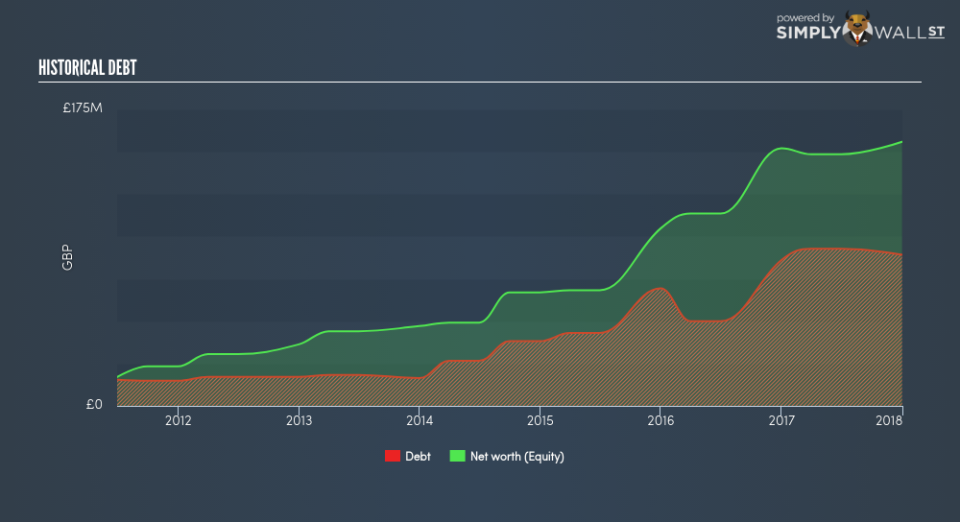Are Restore plc’s (LON:RST) Interest Costs Too High?

Investors are always looking for growth in small-cap stocks like Restore plc (LON:RST), with a market cap of UK£598.68m. However, an important fact which most ignore is: how financially healthy is the business? Assessing first and foremost the financial health is essential, as mismanagement of capital can lead to bankruptcies, which occur at a higher rate for small-caps. Here are few basic financial health checks you should consider before taking the plunge. However, since I only look at basic financial figures, I suggest you dig deeper yourself into RST here.
How does RST’s operating cash flow stack up against its debt?
RST has sustained its debt level by about UK£89.20m over the last 12 months – this includes both the current and long-term debt. At this constant level of debt, RST currently has UK£10.70m remaining in cash and short-term investments , ready to deploy into the business. Additionally, RST has generated UK£11.00m in operating cash flow during the same period of time, resulting in an operating cash to total debt ratio of 12.33%, meaning that RST’s debt is not appropriately covered by operating cash. This ratio can also be interpreted as a measure of efficiency as an alternative to return on assets. In RST’s case, it is able to generate 0.12x cash from its debt capital.
Does RST’s liquid assets cover its short-term commitments?
With current liabilities at UK£45.40m, it seems that the business has been able to meet these obligations given the level of current assets of UK£56.10m, with a current ratio of 1.24x. Generally, for Commercial Services companies, this is a reasonable ratio since there is a bit of a cash buffer without leaving too much capital in a low-return environment.
Is RST’s debt level acceptable?
With a debt-to-equity ratio of 57.22%, RST can be considered as an above-average leveraged company. This is not unusual for small-caps as debt tends to be a cheaper and faster source of funding for some businesses. No matter how high the company’s debt, if it can easily cover the interest payments, it’s considered to be efficient with its use of excess leverage. A company generating earnings after interest and tax at least three times its net interest payments is considered financially sound. In RST’s case, the ratio of 11.08x suggests that interest is comfortably covered, which means that debtors may be willing to loan the company more money, giving RST ample headroom to grow its debt facilities.
Next Steps:
RST’s cash flow coverage indicates it could improve its operating efficiency in order to meet demand for debt repayments should unforeseen events arise. However, the company exhibits proper management of current assets and upcoming liabilities. I admit this is a fairly basic analysis for RST’s financial health. Other important fundamentals need to be considered alongside. I suggest you continue to research Restore to get a more holistic view of the stock by looking at:
Future Outlook: What are well-informed industry analysts predicting for RST’s future growth? Take a look at our free research report of analyst consensus for RST’s outlook.
Valuation: What is RST worth today? Is the stock undervalued, even when its growth outlook is factored into its intrinsic value? The intrinsic value infographic in our free research report helps visualize whether RST is currently mispriced by the market.
Other High-Performing Stocks: Are there other stocks that provide better prospects with proven track records? Explore our free list of these great stocks here.
To help readers see pass the short term volatility of the financial market, we aim to bring you a long-term focused research analysis purely driven by fundamental data. Note that our analysis does not factor in the latest price sensitive company announcements.
The author is an independent contributor and at the time of publication had no position in the stocks mentioned.

